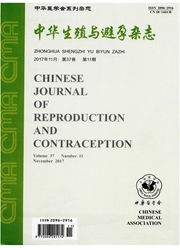

 中文摘要:
中文摘要:
目前在体外研究中,主要通过分离胚体和骨形态发生蛋白4(bone morphogenetic protein4,BMP4)诱导这2种途径从人胚胎干细胞(hEsc)分化获取滋养层细胞(TB)。胚体途径可基于细胞的黏附性和培养基中β-hCG的含量从胚体中分离获得TB,进而在三维培养体系中可检测细胞的侵袭性及细胞与基质的相互作用。BMP4途径通过去除外源性成纤维细胞生长因子及提高氧含量均可促进BMP4诱导TB的分化。虽然hESC分化TB模型目前还存在一些争议,但是相关研究可为探讨人类胚胎的植入及胎盘的形成提供重要的理论依据。
 英文摘要:
英文摘要:
Currently, trophoblasts (TBs) mainly have been differentiated from human embryonic stem cells (hESCs) by separating embryoid bodies (EBs) and bone morphogenetic protein 4 (BMP4) treatment in vitro. For EB-derived trophoblasts, approaches to purify them from EBs are based on selection for adhesive ability and for β-hCG content in the medium. The cell invasion and interaction between TB and extracellular matrix can be tested in three-dimensional culture system. For BMP4-driven trophoblasts, absence of fibroblast growth factor 2(FGF2) and a high concentration of O2 gas atmosphere can contribute to their differentiation. However, the models ofhESC- derived TB remain controversial. Anyway, studies on the differentiation of TB from hESC may provide an important theoretical basis for researching human embryo implantation and placentation.
 同期刊论文项目
同期刊论文项目
 同项目期刊论文
同项目期刊论文
 期刊信息
期刊信息
